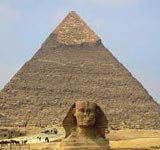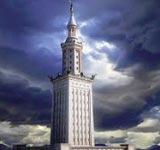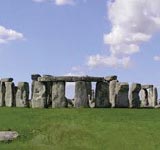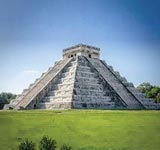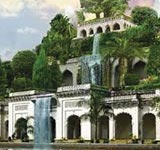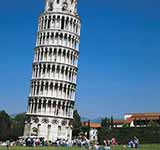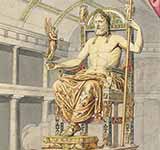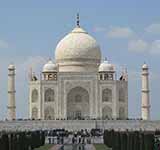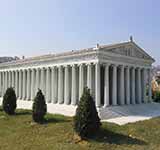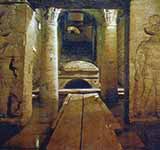Colosseum built in Rome, Italy is the largest elliptical amphitheater of the Roman Empire. This is considered to be the best specimen of Roman architecture and engineering. It was created by the ruler Vespasian between the 70th - 72nd AD and then it was completed by Emperor Titus in the 80th century. Between 81 and 96 years there were some more changes in the reign of Domitian. The oval Colosseum had a capacity of 50,000 people, which was not common in that time. There were bloody battles among warriors in this stadium for mere entertainment. Warriors also had to fight with animals. Gladiators fought with tigers. It is estimated that about 5 lakh animals and 10 lakh people have been killed in such demonstrations in this stadium. Apart from this, dramas based on mythology were also played here. There were twice a year of grand events and Romanians loved this game very much.
Great Pyramid of Giza is the monument to be built for the pharaoh in which the body of the king is buried and kept safe. These dead bodies are called Mummy.
Colossus of Rhodes is a statue of Helios, located in the island of Rhodes, Greece, made by Chares of Lindos between 292 and 280 BC. This statue is regarded as the 7 wonders of the ancient world. Before its destruction, this statue stood more than 32 meters tall, making it the tallest statue in the ancient world. Colossus of Rhodes is almost the same height as the Statue of Liberty. This tallest structure destroyed by an earthquake in 226 BC. It is considered one of the Seven Wonders of the Ancient World. The statue made with bronze plates on an iron frame represented the Greek god of the sun, Helios. According to Pliny the Elder, he measured about 32 meters. The base is white marble, measured 40 cubits (15 meters). It would have weighed about 70 tons. In comparison with the Statue of Liberty located in New York - measures 33 meters and has a base of 48 meters, although it was built more than 2000 years later.
Petra is a historic town located in the Ma'an Governorate, Jordan, famous for its stone-shaped buildings and water vehicles system. Petra was chosen as one of the world's seven new wonders in July 2007 due to Petra's outstanding engineering achievements and well-protected dimensions.
The Lighthouse of Alexandria, considered one of the seven wonders of the ancient world and one of the most advanced and effective achievements of Hellenistic technology, was built on the island of Pharos, facing the port of Alexandria in Egypt, in the years between 300 to 280 BC and remained operational until the fourteenth century, when it was destroyed by two earthquakes. It was built by Sostratus of Cnidus a Greek architect and engineer. The project was started by Ptolemy I Soter and was completed by his son Ptolemy II Philadelphus. The purpose of the imposing work was to increase the safety of incoming and outgoing maritime traffic, made dangerous by the numerous sandbanks in the stretch of sea overlooking the port of Alexandria and the absence of orographic reliefs. It allowed to signal the position of the port to the ships, by day through the special bronze mirror polished that reflected the sunlight to the open sea, while fires were lit at night.
Stonehenge is a famous prehistoric architecture located in Wiltshire, Britain. The Stonehenge is a composite structure, formed by concentric circles of stones that are up to five meters high and weighing almost fifty tons. Stonehenge is formed by large blocks of metamorphic rocks distributed in four concentric circles. The exterior block is thirty meters in diameter, is formed by large rectangular stones. The whole complex is surrounded by a circular moat measuring 104 m in diameter. Within this space there is a terrace with 56 pits known as the "Aubrey holes". The Stonehenge This is a megalithic sludge (a sphere made by arranging large rocks). More than 7 meters (23 ft) high rockers have been planted in the ground and a sphere has been made. Historians speculate that its creation was completed in the Stone Age and Bronze Age from 3000 BCE to 2000 BCE. There is a difference of opinion among the scholars about the purpose of the ancient structure of Stonehenge. But here starting from the pre 3000 BC, the symbols of human graves are found in which the oldest estates were of a deceased fire in 3000 BC.
Chichen Itza is an important Mayan archaeological complex located in Mexico, in the north of the Yucatán peninsula. The ruins, which extend over an area of 3 km, belonged to a large city that was one of the most important centers of the region around the epiclassic period of the Maya civilization, between the sixth and the eleventh century. The site includes numerous buildings, representative of different architectural styles, among the most famous we can indicate the pyramid of Kukulkan (known as El Castillo), the astronomical observatory and the Temple of the warriors. The Chichen Itza site was declared by UNESCO a World Heritage Site in 1988. It is a federal property of the state of Mexico, and is administered by the National Institute of Anthropology and History (INAH). It was included in 2007 among the seven wonders of the modern world.
Hanging Gardens of Babylon (also known as the Semiramis Hanging Park) and Babylon walls are among the Seven Wonders of the Ancient World located in Al-Hillah. Its architectural form is very unique, because it is multilevel. The park is planted with a variety of beautiful trees and equipped with irrigation systems up to a height of 100 meters above the ground. From the top of this park you can see the scenery around the Babylonian Kingdom.
The Alhambra is an Andalusian palatine city located in Granada, autonomous community of Andalusia, Spain. It consists of a set of palaces, gardens and fortress that housed a true citadel within the city of Granada. Its true attraction, as in other Muslim works of the time, not only lies in the interiors, whose decoration is among the peaks of Andalusian art, but also in its location and adaptation, generating a new landscape but totally integrated with the pre-existing nature.
The Statue of Christ the Redeemer is a statue of Jesus Christ in the greatest Art Deco architectural style and is located in Rio de Janeiro, Brazil. Christ the Redeemer is one of the finalists for the seven new wonders of the world, together with 20 other candidates.
11. Golden Gate Bridge

Great Wall of China is the longest building ever made by humans, located in China. The Great Wall of China is considered one of the Seven Wonders of the World. In 1987, this building was included in the list of UNESCO World Heritage Sites. According to measurements, the overall length of the wall reaches 8,850 km.
Hagia Sophia or Aya Sofya is a former basilica, a mosque, and now a museum, in Istanbul, Republic of Turkey. From its construction in 537 AD to 1453 AD, this building is an Orthodox cathedral and the seat of the Ecumenical Patriarch of Constantinople except in 1204 to 1261, when this place was changed by the Fourth Crusade to become a Roman Catholic Cathedral under the rule of the Latin Empire of Constantinople.
The Tower of Pisa was actually made to stand vertically like a bell tower in general, but began to tilt shortly after its construction began in August 1173. It is located behind the cathedral and is the third building of the Campo dei Miracoli (rainbow field) of the city of Pisa.
15. Machu Picchu

The Mausoleum at Halicarnassus or mausoleum of Mausolo was a tomb built between 353 and 350 BC in Halicarnassus (present Bodrum, Turkey) to Mausolo, a satrap of the Achaemenid Empire, and Artemisia II of Cária, his sister and wife. The structure was designed by the Greek architects Satyros and Pytheus. It was approximately 45 meters high, and each of its four sides was adorned with reliefs created by each of the four Greek sculptors - Buraxis, Scopas of Paros, Leocarés and Timóteo. The finished structure was considered to be an aesthetic triumph by Antipater of Sidon, who identified it as one of its seven wonders of the ancient world. The word mausoleum has come to be used generically for any grand tomb, although "MAUSOLEUM - Eion" originally meant "associated with Mausolo". The building was destroyed by successive earthquakes from the 12th to the 15th century.
17. Panama Canal
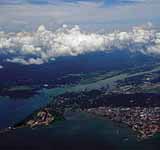
18. Potala Palace
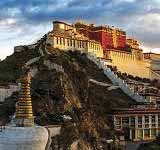
The Statue of Zeus at Olympia was a Chryselephantine sculpture sculpted by Phidias. Located in Olympia (Greece), it was considered one of the Seven Wonders of the Ancient World. According to Pausanias, Zeus was sitting on a throne with his torso naked and the mantle around his legs, his head was crowned with olive and the look, directed downwards, gave him a paternal aspect.
20. Sydney Opera House

The Sydney Opera House is a building for opera and other performing arts (music, dance, theater) in the Australian city of Sydney. It is the home of the Sydney Symphony Orchestra. It was designed by Danish architect Jørn Utzon and has been on the UNESCO World Heritage List since 2007. The plan to build the Sydney Opera House on Sydney Harbor came into being in 1955. An international architecture competition was organized for it. Jørn Utzon won the competition with this design, he would have drawn the design in one go without a ruler or calculator. Utzon loved sailing. This building would symbolize his love for sailing because the roofs look not only like shells but also like the sails of a large sailing ship.
The Taj Mahal, which means The Palace of the Crown, is located in Agra, on the banks of the Yamuna River in Uttar Pradesh, India. It is a mausoleum of marble white built by Emperor Mughal Muslim Shah Jahan in memory of his wife Mumtaz Mahal, also known Mumtaz Mahal. The Taj Mahal is a masterpiece of Mughal architecture.
The Temple of Artemis or Temple of Diana was one of the Seven Wonders of the Ancient World, located in Ephesus. It was the largest temple in the ancient world, and for a long time the most significant achievement of Greek civilization and Hellenism, built for the Greek goddess Artemis, hunting and wildlife.
23. Acropolis of Athens

24. Angkor Wat

25. Bell Rock Lighthouse

26. Brooklyn Bridge

27. Cairo Citadel
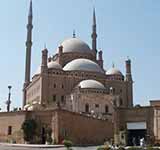
Catacombs of Kom El Shoqafa is located on Bab el Molouk Street, in the Karmouz neighborhood of Alexandria (Egypt). Its bas-relief decorations show a mixture of Egyptian and Greco-Roman art forms, and it is considered one of the most important archaeological sites in the city.
29. Channel Tunnel
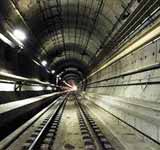
30. Cluny Abbey
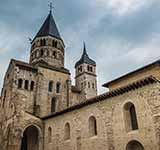
31. Delta Works
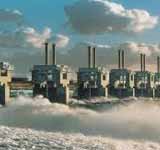
32. Eiffel Tower

33. Ely Cathedral
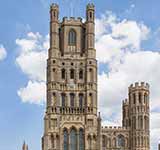
34. Empire State Building

The Hoover Dam is a dam in type gravity-arch reinforced concrete built in 1935 and located in the Black Canyon along the river Colorado, on the border between the state of Arizona and Nevada. For its construction, 3,400,000 m³ of concrete were used, which allowed to build a 221 m high structure and a 201 m long base at the base. At the time of its completion it was the largest hydroelectric power plant and also the largest concrete structure in the United States.
36. Itaipu Dam
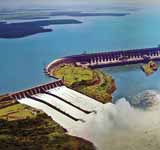
Kiyomizu-dera, officially Otowa-san Kiyomizu-dera is an ancient Buddhist temple, which was built in 798 and has been damaged or burned ten times due to war or natural disasters. Behind the main temple there is a Jishu-jinja temple called the God of Matchmaking, and in front of the temple there are 2 stones which are often called "Blind Stones" and "Stone of Astrologers of Love". It is said that according to local residents by closing their eyes 100 meters away we walk towards the blind stone by closing our eyes and until right in front of the blind stone, then our desires will be achieved. And to test the loyalty of the heart of the couple, we can try rock fortune tellers, the way remains the same as closing the eyes, but if the direction of our feet is not right toward the rock fortune teller or stray far away then our hearts are still thinking of others.
38. Moai

The castle of Neuschwanstein is located in the federal state of Bavaria near Füssen, Germany. It was commissioned by King Ludwig II of Bavaria in 1869. Its original name was New Castle of Hohenschwangau, in honor of the castle where the king spent much of his childhood.
40. Old City of Jerusalem

41. Porcelain Tower of Nanjing
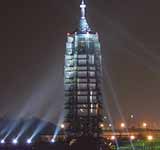
42. Red Square

43. Statue of Liberty

Statue of Liberty, is one of the most famous monuments of the United States. Weighing 204 tons and measuring 92.9 meters, it was built in France and offered by the French people, as a sign of friendship between the two nations, to celebrate the centenary of the American Declaration of Independence.
44. Timbuktu

45. Zuiderzee Works

46. CN Tower




